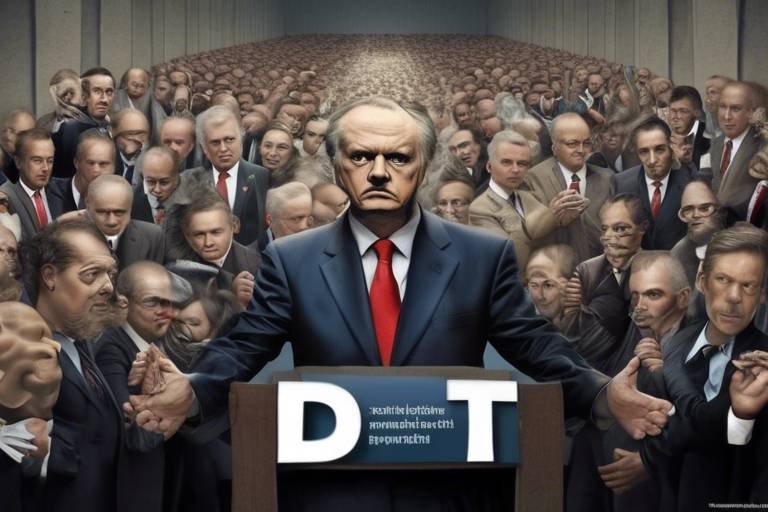Philosophy and the Politics of Public Education
Public education is not just a system for disseminating knowledge; it is a complex interplay of philosophical thought and political frameworks. At its core, the philosophy of education addresses fundamental questions about the purpose, methods, and content of education. These philosophical underpinnings are crucial in shaping the political landscape of public education, influencing everything from curriculum design to funding priorities. In this article, we will delve into how philosophical ideas inform educational practices and how these practices, in turn, are shaped by political ideologies.
The intersection of philosophy and politics in education raises important questions: What should students learn? Who decides what is taught? How do we ensure that education is equitable and accessible to all? These questions are not merely academic; they have real-world implications for educators, students, and policymakers alike. As we explore this intricate relationship, we will uncover the ways in which historical perspectives, contemporary debates, and ethical considerations all converge to influence public education.
In the following sections, we will examine the role of philosophy in education, the historical perspectives that have shaped current practices, and the political influences that impact educational policy. We will also consider the ethical implications of these dynamics, particularly in terms of equity and access. Through this exploration, we aim to illuminate the profound impact that philosophical thought and political action have on the education system, ultimately shaping the future of our society.
Philosophy serves as the bedrock of educational practices, offering foundational principles that guide the development of curricula and teaching methods. It addresses the moral and ethical dilemmas that educators face daily, helping them navigate challenges related to student engagement, inclusivity, and the broader societal implications of their teaching. For instance, a philosophy that prioritizes critical thinking might lead educators to adopt teaching methods that encourage inquiry and dialogue, rather than rote memorization.
Moreover, philosophical frameworks such as constructivism emphasize the importance of students actively constructing their own understanding, which can lead to more personalized and effective learning experiences. By grounding education in philosophical thought, educators can better prepare students not just to absorb information, but to engage with it critically and creatively.
To understand the current landscape of public education, it is essential to examine historical philosophies that have shaped educational policies and practices over time. From the Socratic method of dialogue and questioning to the Enlightenment's emphasis on reason and individualism, each philosophical movement has left its mark on how we think about education today. These historical perspectives often reflect the political climate of their time, influencing the governance and funding of educational institutions.
Throughout history, several key philosophers have significantly influenced educational theory and practice. Figures such as John Dewey and Paulo Freire have advocated for approaches that prioritize democratic engagement and critical pedagogy, respectively. Their ideas continue to resonate in contemporary discussions about how to create inclusive and effective educational environments.
Dewey's pragmatic approach to education emphasizes the importance of experiential learning and community involvement. He believed that education should not merely prepare students for tests, but for active participation in a democratic society. This perspective encourages educators to create learning experiences that are relevant to students' lives, fostering a sense of agency and responsibility.
Freire's critical pedagogy challenges the traditional power dynamics in education, advocating for a model that promotes dialogue and critical thinking. He argued that education should empower students to question and transform their realities, rather than passively accept them. This philosophy has profound implications for how we view the role of educators and the purpose of education itself.
Current philosophical debates in education often center around issues of equity, access, and the role of technology. As educators and policymakers grapple with these challenges, the philosophical underpinnings of their decisions become increasingly important. For example, discussions about integrating technology into the classroom raise questions about who has access to these resources and how they can be used to enhance learning for all students.
The political landscape significantly shapes education policy, impacting everything from funding to curriculum standards. Political ideologies often dictate how resources are allocated and which educational practices are prioritized. This interplay between philosophy and politics is crucial for understanding the complexities of public education.
The ongoing tension between federal and state control of education policies can lead to conflicts over standards, funding, and accountability measures. This dynamic shapes the educational landscape across the nation, as states navigate federal mandates while also addressing local needs and priorities. The result is a patchwork of educational practices that can vary widely from one region to another.
Interest groups, including unions, advocacy organizations, and corporations, exert significant influence on education policy. These groups often shape public discourse and legislative agendas to reflect their priorities, impacting how education is delivered and funded. Understanding the motivations and goals of these interest groups is essential for educators and policymakers seeking to navigate the complex political landscape of public education.
Ethical considerations in public education involve critical questions of justice, equity, and the moral responsibilities of educators and policymakers. As we strive to create inclusive educational environments, it is essential to address systemic inequalities that persist within the education system.
Addressing issues of equity and access in education is not just a legal obligation; it is a moral imperative. Ensuring that all students have equal opportunities to succeed requires a commitment to understanding and dismantling barriers that disproportionately affect marginalized communities. This involves not only advocating for policy changes but also fostering a culture of inclusivity within schools.
The balance between teacher autonomy and accountability raises ethical questions about trust and professionalism. While accountability measures aim to ensure high standards of education, they can also stifle creativity and undermine the professional judgment of educators. Finding the right balance is crucial for fostering an environment where both teachers and students can thrive.
- What is the role of philosophy in education? Philosophy provides foundational principles that guide educational practices and address ethical dilemmas.
- How do historical perspectives influence current educational policies? Historical philosophies shape our understanding of education, impacting policies and practices today.
- What are the key ethical considerations in public education? Issues of equity, access, and teacher autonomy are central to ethical discussions in education.
- How do political influences shape education policy? Political ideologies and interest groups play a significant role in determining funding, curriculum, and governance.

The Role of Philosophy in Education
Philosophy plays a vital role in shaping the landscape of education, acting as the foundation upon which teaching methods and curricula are built. It is not merely an abstract discipline; rather, it is the lens through which educators view the world and their responsibilities within it. By grappling with fundamental questions about knowledge, learning, and the purpose of education, philosophy influences how educators approach their practice and the ethical dilemmas they encounter. For instance, consider the question: What is the ultimate goal of education? Should it be to prepare students for the workforce, or is it more about fostering critical thinking and citizenship? These questions are deeply philosophical and have real implications for classroom practices.
Furthermore, philosophy encourages educators to reflect on their values and beliefs, which can significantly impact their teaching style. A teacher who subscribes to a constructivist philosophy may prioritize student-led discussions and hands-on learning experiences, while one who adheres to a more traditional, behaviorist approach might focus on rote memorization and standardized testing. This divergence not only affects classroom dynamics but also shapes the broader educational environment and policy decisions. As educators navigate these philosophical waters, they must consider the moral and ethical responsibilities they hold towards their students, especially in an increasingly diverse and complex society.
In addition, the integration of philosophy into education helps address pressing social issues. For example, by embracing philosophical frameworks that emphasize justice and equity, educators can work towards creating inclusive classrooms that cater to the needs of all students. This is particularly important in public education, where disparities in access and resources can significantly hinder student success. By fostering a philosophical understanding of these issues, educators can advocate for systemic changes that promote fairness and equality within the educational landscape.
To illustrate the impact of philosophy on educational practices, consider the following table that outlines different philosophical approaches and their implications for teaching:
| Philosophical Approach | Key Characteristics | Implications for Teaching |
|---|---|---|
| Perennialism | Focus on enduring ideas and universal truths | Emphasis on classic texts and lectures |
| Progressivism | Learning through experience and problem-solving | Student-centered learning and collaborative projects |
| Essentialism | Core knowledge and skills are essential for education | Structured curriculum with a focus on basics |
| Constructivism | Knowledge is constructed through interaction | Encouragement of critical thinking and exploration |
In conclusion, the role of philosophy in education is multifaceted and deeply influential. It shapes not only the methodologies employed by educators but also the ethical considerations they must navigate. As we continue to explore the intersection of philosophy and education, it becomes clear that engaging with these ideas is crucial for fostering an environment that promotes learning, equity, and social responsibility.

Historical Perspectives on Education
When we dive into the , we uncover a rich tapestry of ideas and philosophies that have influenced how we teach and learn today. Education is not just a modern concept; it has evolved through centuries, shaped by the thoughts and beliefs of great thinkers. These past philosophies have laid the groundwork for contemporary educational policies and practices, and understanding them is crucial for educators and policymakers alike.
For instance, in ancient Greece, philosophers like Socrates and Plato emphasized the importance of critical thinking and the pursuit of knowledge. Socratic questioning, a method still used today, encourages students to engage deeply with material and think for themselves. Plato’s vision of an ideal state included an education system that nurtured the philosopher-kings, highlighting the belief that education is essential for cultivating wise leaders. Fast forward to the Renaissance, where the focus shifted towards humanism, emphasizing the value of individual potential and the arts. This shift laid the groundwork for modern liberal education.
Moving into the 19th century, we see the emergence of formal education systems, influenced by the industrial revolution. The need for a literate workforce led to the establishment of public schooling, and thinkers like Horace Mann advocated for universal education as a right for all children. This was a significant step toward ensuring that education was not just for the elite but accessible to everyone, reflecting a growing belief in democracy and equal opportunity.
In the 20th century, the ideas of John Dewey and Paulo Freire challenged traditional educational methods. Dewey’s pragmatic approach pushed for experiential learning, arguing that education should be relevant to students' lives and prepare them for active participation in a democratic society. He believed that education should not just be about rote memorization but about fostering critical thinking and problem-solving skills. On the other hand, Freire’s critical pedagogy emphasized dialogue and the importance of questioning authority, advocating for an education that empowers students to challenge social injustices.
To better understand the evolution of educational philosophies, let’s take a look at a brief timeline:
| Era | Philosopher | Key Ideas |
|---|---|---|
| Ancient Greece | Socrates, Plato | Critical thinking, ideal state education |
| Renaissance | Various Humanists | Individual potential, arts education |
| 19th Century | Horace Mann | Universal education, public schooling |
| 20th Century | John Dewey, Paulo Freire | Experiential learning, critical pedagogy |
These historical perspectives not only inform our understanding of educational systems but also highlight the ongoing debates within the field. As we consider the implications of these philosophies today, we must ask ourselves: How can we integrate these diverse ideas into our current education systems to better serve our students? What lessons can we learn from the past to address the challenges we face in modern education?
As we reflect on these questions, it's clear that the journey of education is ongoing. The philosophies of the past continue to influence contemporary practices, and by understanding these historical contexts, we can work towards a more equitable and effective education system for all.
- What is the significance of historical perspectives in education?
Understanding historical perspectives helps educators and policymakers recognize the evolution of educational practices and philosophies, allowing for informed decisions in modern contexts. - How did John Dewey influence modern education?
Dewey emphasized experiential learning and critical thinking, advocating for education that prepares students for active participation in society, principles that remain relevant today. - What role did Horace Mann play in public education?
Mann was a key figure in establishing public schooling in the United States, promoting the idea that education should be a right for all children, which laid the foundation for modern public education systems.
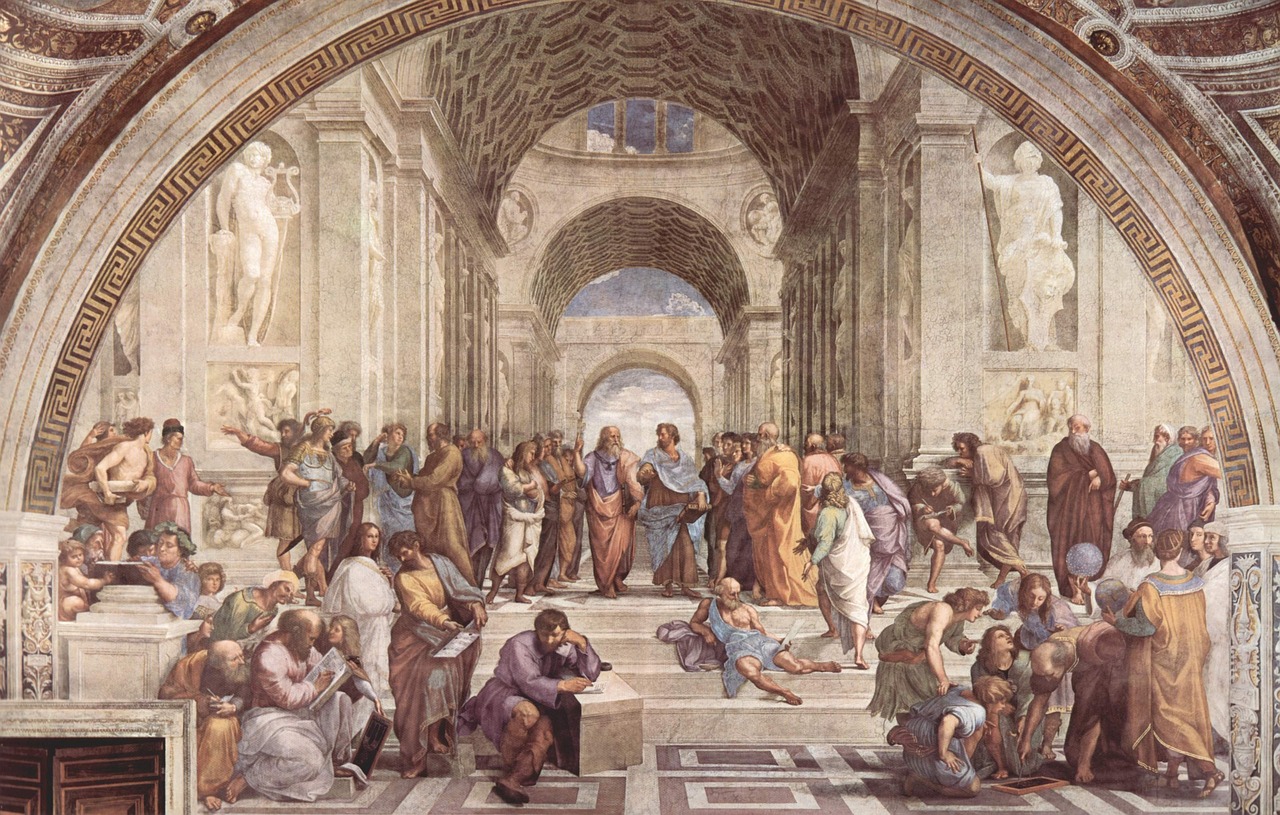
Key Philosophers and Their Impact
When we delve into the world of education, we can't overlook the profound influence of key philosophers whose thoughts have molded the very fabric of educational theory and practice. Two figures, in particular, stand out in this realm: John Dewey and Paulo Freire. Their ideas not only challenged the status quo but also laid the groundwork for modern educational practices that seek to empower students and promote democratic values.
John Dewey, often regarded as the father of pragmatism, believed that education should be rooted in real-life experiences. He argued that learning is not a passive absorption of facts but an active process where students engage with their environment. Dewey emphasized the importance of community and social interaction in education, asserting that schools should be a microcosm of a democratic society. In his view, education was not merely a means to an end but a vital component of a thriving democracy. This perspective has led to the adoption of experiential learning methods in schools, where students participate in hands-on activities that foster critical thinking and problem-solving skills.
On the other hand, Paulo Freire's contributions to educational philosophy are nothing short of revolutionary. His seminal work, Pedagogy of the Oppressed, critiques traditional banking models of education—where students are seen as empty vessels to be filled with knowledge. Instead, Freire advocated for a dialogical approach, where education is a collaborative process that encourages critical consciousness. His ideas have inspired countless educators to rethink their teaching methods, promoting a classroom environment where students are active participants in their learning journey. Freire's emphasis on dialogue and reflection has paved the way for critical pedagogy, which seeks to address social injustices and empower marginalized voices within the educational system.
The impact of Dewey and Freire can be seen in various educational reforms and practices today. For instance, many contemporary curricula now integrate project-based learning, which aligns closely with Dewey's principles of experiential education. Similarly, Freire's influence is evident in movements that advocate for social justice education, where the aim is to create equitable learning environments for all students. These philosophical underpinnings not only inform teaching strategies but also shape the policies that govern public education.
To further illustrate the influence of these philosophers, consider the following table that outlines their key contributions:
| Philosopher | Key Contributions | Impact on Education |
|---|---|---|
| John Dewey | Pragmatism, experiential learning, democracy in education | Emphasis on active learning and community engagement |
| Paulo Freire | Critical pedagogy, dialogue, empowerment of marginalized groups | Focus on social justice and critical consciousness in education |
In conclusion, the ideas of John Dewey and Paulo Freire continue to resonate within the educational landscape, inspiring educators and policymakers alike to foster environments that not only prioritize knowledge but also cultivate critical, engaged citizens. Their legacies remind us that education is a powerful tool for social change, capable of transforming individuals and communities alike.
- Who are the key philosophers in education? The key philosophers include John Dewey and Paulo Freire, among others, who have significantly influenced educational theory and practice.
- What is John Dewey's main contribution to education? John Dewey emphasized experiential learning and the importance of community in education, advocating for a democratic approach to teaching.
- How did Paulo Freire change the way we think about education? Paulo Freire challenged traditional educational models and promoted dialogue and critical thinking, focusing on empowering students and addressing social injustices.
- Why is philosophy important in education? Philosophy provides foundational principles that guide educational practices, helping educators navigate moral and ethical dilemmas in public education.

John Dewey's Pragmatism
John Dewey, a towering figure in the realm of educational philosophy, championed the idea that education should not merely be a process of rote memorization but rather a dynamic and interactive experience. His pragmatic approach to education emphasizes the importance of experiential learning, where students engage with real-world problems and learn through their experiences. Dewey believed that education should mirror the complexities of life, allowing students to develop critical thinking skills and adapt to new situations. This approach is akin to a gardener nurturing a plant; just as a plant requires the right conditions to grow, students flourish when they are provided with opportunities to explore, question, and collaborate.
Dewey's philosophy is deeply rooted in the concept of democracy. He argued that education plays a crucial role in preparing individuals for active participation in a democratic society. In his view, schools should be microcosms of democracy, where students learn to communicate, collaborate, and resolve conflicts. This idea can be illustrated through the following principles:
- Community Engagement: Dewey believed that education should involve the community, fostering connections between students and their surroundings.
- Critical Inquiry: Students should be encouraged to ask questions and challenge assumptions, developing a habit of critical thinking.
- Collaborative Learning: Dewey emphasized the importance of group work, where students learn from one another and develop social skills.
Moreover, Dewey's pragmatic approach also emphasizes the importance of reflection. He posited that students must not only engage in activities but also take time to reflect on their experiences to derive meaningful insights. This reflective practice allows learners to connect theory with practice, making education a more holistic experience. For instance, after participating in a community service project, students should discuss what they learned about social responsibility and the impact of their actions, thereby deepening their understanding of civic engagement.
In essence, Dewey's pragmatism invites educators to rethink traditional teaching methods and adopt a more student-centered approach. By focusing on the needs and interests of students, educators can create a learning environment that is not only engaging but also relevant to the challenges of the modern world. This shift from a teacher-centered model to a learner-centered model is crucial in preparing students for the complexities they will face outside the classroom.

Paulo Freire's Critical Pedagogy
Paulo Freire's Critical Pedagogy is a revolutionary approach to education that challenges the traditional dynamics of power and authority within the classroom. Freire believed that education should not merely be about the transmission of knowledge from teacher to student; instead, it should foster a dialogical relationship where both parties learn from each other. This philosophy is rooted in the idea that education is a political act, and as such, it plays a crucial role in the struggle for social justice.
At the heart of Freire's pedagogy is the concept of conscientization, which refers to the process of developing a critical awareness of one’s social reality through reflection and action. Freire argued that education should empower students to question the status quo, recognize oppressive structures, and take action towards social change. He famously stated, "Education either functions as an instrument which is used to facilitate integration of the younger generation into the logic of the present system and bring about conformity, or it becomes the practice of freedom, the means by which men and women deal critically and creatively with reality and discover how to participate in the transformation of their world."
Freire's model is characterized by several key principles:
- Dialogue: Freire emphasized the importance of dialogue in education, arguing that it fosters critical thinking and mutual respect between educators and students.
- Problem-posing education: This approach contrasts with the traditional banking model of education, where students are seen as passive recipients of knowledge. Instead, problem-posing education encourages students to engage with real-world issues, analyze them, and work collaboratively to find solutions.
- Praxis: Freire believed that education should lead to action. He defined praxis as the combination of reflection and action, suggesting that learners should not only understand the world but also work to change it.
Freire's ideas have had a profound impact on educational theory and practice, particularly in marginalized communities where traditional educational frameworks often fail to address the needs of students. His work encourages educators to adopt a more humanistic approach, where the voices of students are valued, and their experiences are integrated into the learning process.
In today's context, Freire's Critical Pedagogy remains relevant as educators grapple with issues of equity and access. By embracing Freire's principles, educators can create inclusive classrooms that not only recognize but celebrate the diverse backgrounds and perspectives of all students. This approach fosters a sense of belonging and empowers students to become active participants in their own education and in the larger society.
- What is Critical Pedagogy? Critical Pedagogy is an educational philosophy that encourages students to question and challenge power structures and societal norms through dialogue and critical thinking.
- How does Paulo Freire's approach differ from traditional education? Unlike traditional education, which often emphasizes rote memorization and passive learning, Freire's approach promotes active engagement, dialogue, and the development of critical consciousness.
- Why is dialogue important in education? Dialogue fosters mutual respect and collaboration between educators and students, allowing for a richer learning experience where all voices are heard and valued.
- How can educators implement Critical Pedagogy in their classrooms? Educators can implement Critical Pedagogy by creating a learning environment that encourages open dialogue, integrating real-world issues into the curriculum, and promoting critical thinking and problem-solving skills.

Contemporary Philosophical Debates
In today's rapidly evolving educational landscape, are at the forefront of discussions surrounding public education. These debates are not just academic exercises; they are critical conversations that shape the very fabric of our educational systems. Issues such as equity, access, and the role of technology are hot topics that educators and policymakers grapple with daily. The way we approach these issues can either empower or hinder the future of education for countless students.
One of the most pressing debates centers around equity in education. The question arises: how do we ensure that all students, regardless of their background, have access to the same quality of education? This is not merely a logistical challenge; it is a moral imperative. Philosophers argue that an equitable education system must address the systemic barriers that marginalized communities face. For instance, funding disparities often lead to significant differences in educational quality, which can perpetuate cycles of poverty and inequality.
Another critical area of debate is the impact of technology on education. With the rise of online learning platforms and digital resources, educators are faced with a double-edged sword. On one hand, technology can enhance learning experiences and provide access to resources that were previously out of reach for many students. On the other hand, it raises questions about digital equity—not every student has the same access to technology or the internet, which can create a new form of inequality. This leads to discussions about how we can integrate technology in a way that is inclusive and beneficial for all.
Moreover, the role of standardized testing in education is a hotly debated topic. Critics argue that an over-reliance on testing can stifle creativity and critical thinking, reducing education to a mere numbers game. This perspective aligns with the ideas of philosophers like Paulo Freire, who advocated for a more holistic approach to education that prioritizes dialogue and critical engagement over rote memorization. The challenge lies in finding a balance between accountability and fostering an environment where students can thrive as individuals.
As we navigate these contemporary debates, it is essential to recognize that the questions we ask today will shape the educational policies of tomorrow. Engaging with these philosophical discussions is crucial for educators and policymakers alike. By understanding the underlying principles that drive these debates, we can work towards solutions that not only address the immediate challenges but also lay the groundwork for a more equitable and effective educational system.
- What is the significance of equity in education?
Equity in education ensures that every student has access to the resources and opportunities necessary for success, regardless of their background. - How does technology impact learning?
Technology can enhance learning experiences but also raises concerns about accessibility and digital equity among students. - What are the drawbacks of standardized testing?
Standardized testing can limit creativity and critical thinking, often prioritizing test scores over actual learning.
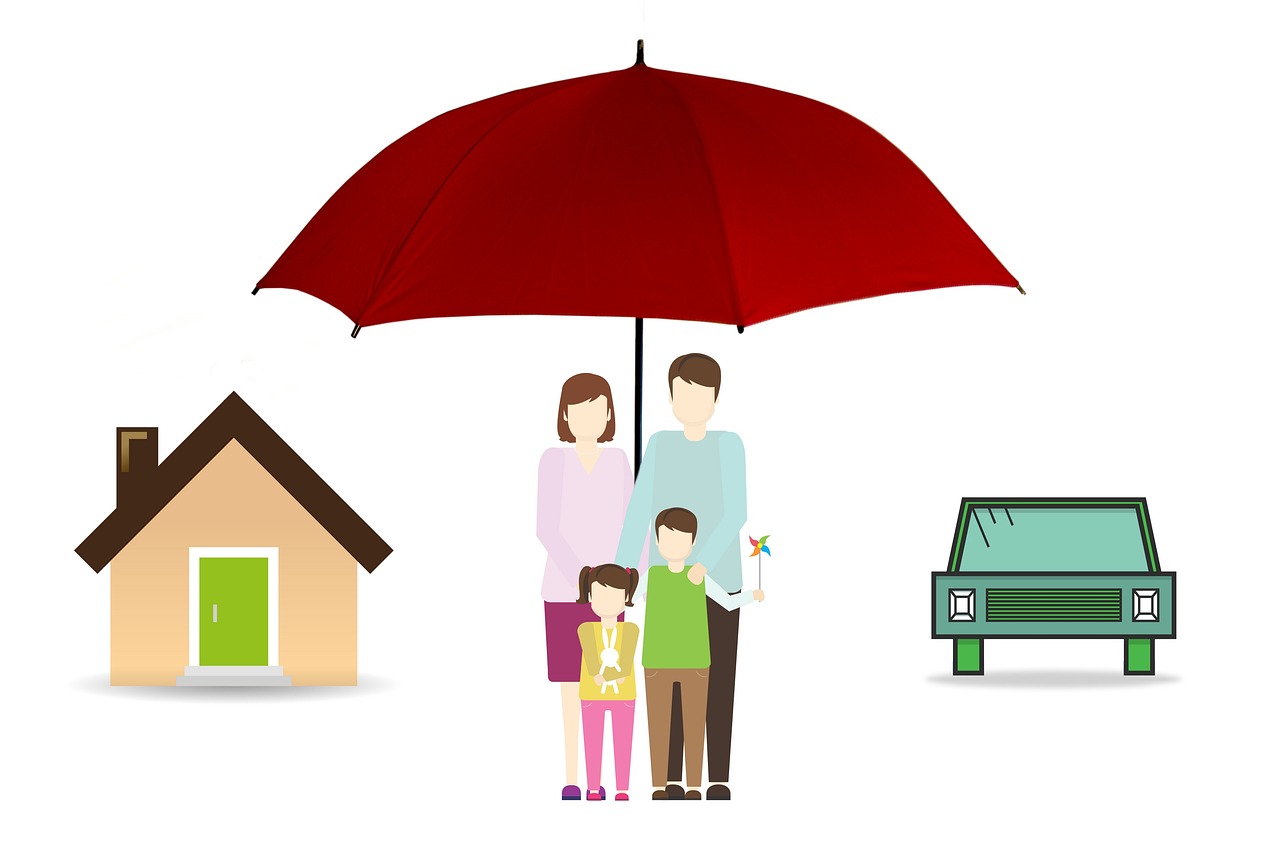
Political Influences on Education Policy
The landscape of public education is not just shaped by classroom dynamics and pedagogical theories; it is profoundly influenced by the intricate web of political ideologies and power struggles. Education policy is a reflection of the values and priorities of a society, which means that the decisions made at the political level can have far-reaching implications for students, teachers, and the educational institutions themselves. From funding allocations to curriculum standards, the political environment plays a crucial role in determining how education is delivered and who has access to it.
At the heart of this political influence lies the ongoing tension between federal and state control over education policies. This tug-of-war often leads to conflicts that can stymie progress and create disparities in educational quality across different regions. For instance, while the federal government may set certain standards, state governments have the power to interpret and implement these guidelines in ways that may not always align with the original intent. This discrepancy can lead to a patchwork of educational experiences for students, depending on where they live.
Furthermore, the influence of interest groups cannot be overlooked. Various stakeholders, including teachers' unions, advocacy organizations, and corporate entities, exert significant pressure on policymakers to shape education policy according to their agendas. These groups often lobby for specific changes that reflect their priorities, whether it's increased funding for public schools, the introduction of charter schools, or the integration of technology into the classroom. The result is a complex interplay of interests that can either enhance or hinder the quality of education.
For example, consider the following table illustrating the major interest groups involved in shaping education policy and their respective influences:
| Interest Group | Influence |
|---|---|
| Teachers' Unions | Advocate for teacher rights, better salaries, and improved working conditions. |
| Corporate Entities | Push for technology integration and privatization of education through charter schools. |
| Advocacy Organizations | Focus on equity, access, and social justice issues within the education system. |
| Government Agencies | Set regulations and standards that govern educational practices and funding. |
In addition to these influences, political ideologies—ranging from progressive to conservative—further complicate the dialogue surrounding education policy. For instance, progressive ideologies tend to emphasize equity and inclusivity, advocating for policies that support underprivileged communities. In contrast, conservative perspectives often prioritize accountability and standardized testing, arguing that these measures ensure quality and performance in education.
The result of these varying influences is a constantly evolving educational landscape that reflects the societal values and political climate of the time. As educators and policymakers navigate this complex terrain, they must remain vigilant and responsive to the needs of students and communities, ensuring that education serves as a tool for empowerment rather than a vehicle for division.
- How do political ideologies impact education policy?
Political ideologies shape the values and priorities that influence education policy, affecting funding, curriculum standards, and governance structures. - What role do interest groups play in shaping education policy?
Interest groups advocate for specific changes that reflect their priorities, influencing public discourse and legislative agendas. - How does federal vs. state control affect education?
The tension between federal and state control can lead to conflicts over standards and funding, resulting in disparities in educational quality across regions.
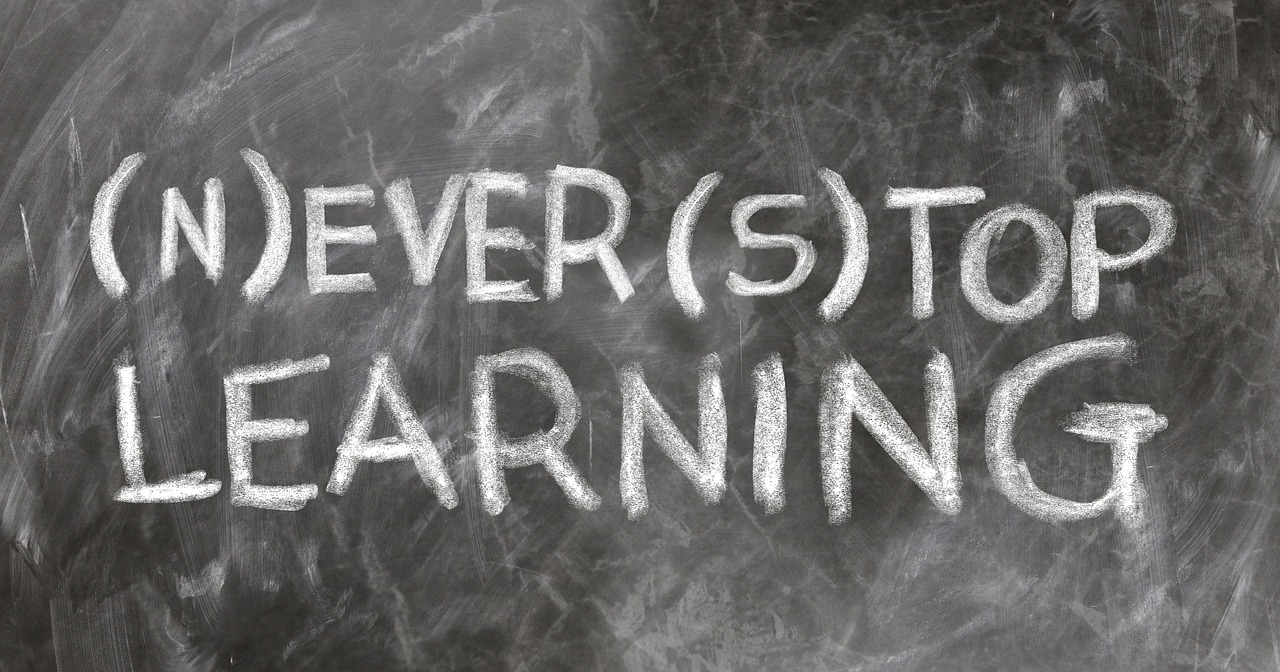
Federal vs. State Control
The ongoing tug-of-war between federal and state control over education policies is a fascinating spectacle that reflects the broader political dynamics of our nation. Imagine a seesaw, where on one side sits the federal government, pushing for uniform standards and accountability, while on the other, state governments strive for autonomy and localized decision-making. This balancing act can lead to a myriad of conflicts, particularly concerning funding, curriculum standards, and accountability measures. The debate often centers around the question: Who knows best when it comes to educating our children?
On one hand, proponents of federal control argue that a standardized approach ensures a baseline quality of education for all students, regardless of where they live. They believe that federal oversight can help address disparities in educational resources and outcomes, particularly in underfunded areas. For instance, federal programs like Title I aim to provide additional resources to schools serving low-income students, which can be crucial in leveling the playing field.
Conversely, advocates for state control contend that education is inherently local. They argue that state governments, being closer to the communities they serve, have a better understanding of local needs and cultural contexts. This perspective champions the idea that states should have the flexibility to create curricula that reflect their unique demographics and values. After all, what works in a rural area may not be suitable for an urban environment. This local control can foster innovation and responsiveness to community needs, but it can also lead to significant disparities in educational quality across the country.
To illustrate this complex relationship, consider the following table that outlines key differences between federal and state control in education:
| Aspect | Federal Control | State Control |
|---|---|---|
| Standardization | Promotes uniform standards across the nation | Allows for tailored standards based on local needs |
| Funding | Provides funding through federal programs | Distributes funding based on state budgets and priorities |
| Curriculum Development | Encourages national curricula and assessments | Empowers local districts to develop their own curricula |
| Accountability | Imposes accountability measures through federal laws | Sets accountability standards that may vary widely |
This ongoing debate is not just academic; it has real implications for educators, students, and communities. As policies shift and evolve, the educational landscape is continually reshaped by these power dynamics. In a world where education is viewed as the key to success, understanding the implications of federal versus state control is essential for anyone invested in the future of public education. So, as we navigate this complex terrain, we must ask ourselves: how can we create a system that balances the need for equity with the desire for local control?
- What is the main difference between federal and state control in education? The main difference lies in the level of standardization and local autonomy, with federal control pushing for uniform standards and state control allowing for localized decision-making.
- How does federal funding impact education? Federal funding aims to support schools, especially those in low-income areas, to ensure equitable access to quality education.
- Can state control lead to disparities in education quality? Yes, varying state standards and funding can create significant differences in educational quality across the nation.
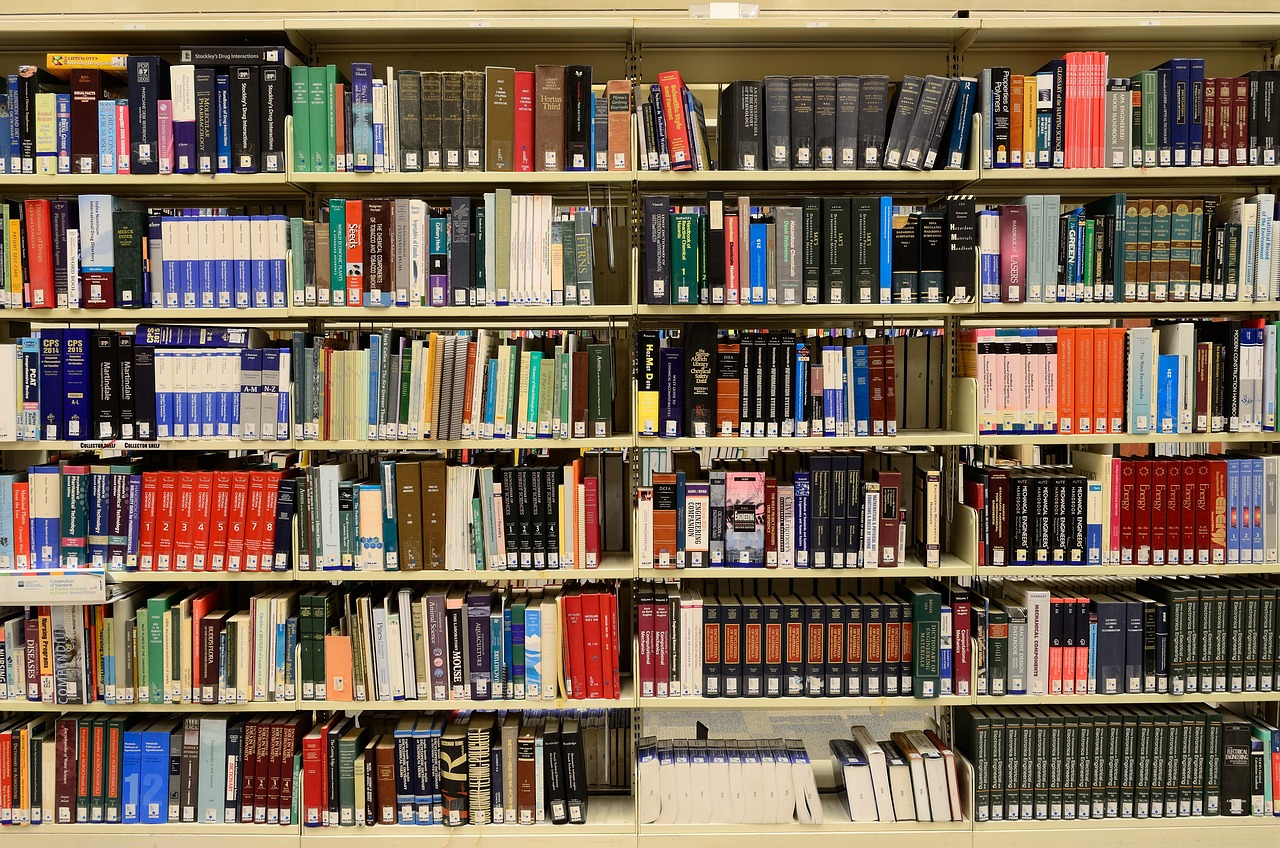
The Influence of Interest Groups
In the intricate world of public education, interest groups wield a significant amount of power and influence, shaping the policies that govern our schools. These groups can range from teachers' unions and parent associations to large corporations and educational advocacy organizations. Each of these entities has its own agenda, which can lead to a complex interplay of interests that ultimately affects how education is delivered to students. But how exactly do these interest groups exert their influence?
One of the primary ways interest groups impact education policy is through lobbying efforts. They often engage in direct communication with lawmakers, advocating for specific policies that align with their goals. For example, teachers' unions may lobby for better salaries and improved working conditions, while corporations might push for policies that favor their educational products or services. This lobbying can take many forms, including:
- Direct meetings with legislators
- Funding political campaigns
- Organizing grassroots movements to mobilize public opinion
Moreover, these groups also play a role in shaping public discourse around education. Through media campaigns, research publications, and community outreach, they can elevate certain issues, making them more prominent in the public eye. For instance, a well-funded advocacy group might launch a campaign highlighting the need for equitable funding across school districts, thereby influencing not only policymakers but also public sentiment.
Interestingly, the influence of interest groups can sometimes lead to conflicting agendas. For instance, while one group may advocate for standardized testing as a means of accountability, another may argue that such testing undermines creativity and critical thinking in the classroom. This tug-of-war can create a chaotic environment in which educational policies are constantly shifting, leading to confusion among educators and students alike.
To further illustrate the influence of interest groups on education policy, consider the following table that outlines some of the major stakeholders and their respective agendas:
| Interest Group | Primary Agenda |
|---|---|
| Teachers' Unions | Advocating for better wages and working conditions |
| Parent Associations | Ensuring parental involvement and student welfare |
| Corporations | Promoting educational products and services |
| Advocacy Organizations | Championing issues like equity and access in education |
Ultimately, the influence of interest groups in public education is a double-edged sword. On one hand, they can serve as vital advocates for change, bringing attention to pressing issues and ensuring that various voices are heard in the policymaking process. On the other hand, their competing interests can lead to fragmentation and inconsistency in educational policies, making it challenging for educators and students to navigate the system effectively. As we move forward, it’s crucial for all stakeholders to engage in meaningful dialogue, ensuring that the primary focus remains on the best interests of students and the quality of education they receive.
- What are interest groups in education? Interest groups in education are organizations that advocate for specific policies, practices, or reforms within the public education system.
- How do interest groups influence education policy? They influence policy through lobbying, funding campaigns, and shaping public discourse around educational issues.
- Are all interest groups beneficial for education? Not necessarily; while some groups advocate for positive changes, others may have agendas that conflict with the best interests of students and educators.
- What role do teachers' unions play? Teachers' unions primarily advocate for teachers' rights, better wages, and improved working conditions.
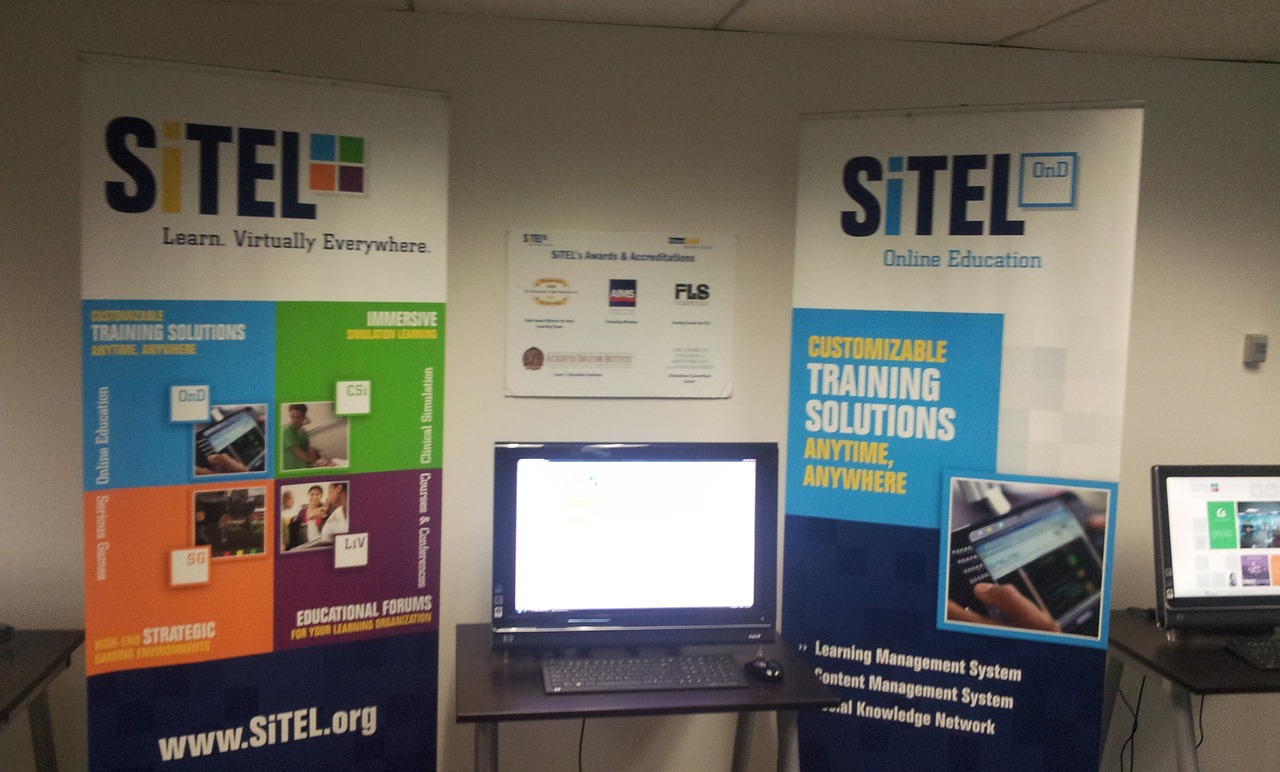
Ethical Considerations in Education
When we dive into the realm of public education, we must confront a myriad of ethical considerations that shape not only the policies but also the very essence of teaching and learning. At the heart of these considerations lie questions of justice, equity, and the moral responsibilities of educators and policymakers. It's like navigating a complex maze where every turn can lead to profound implications for students, teachers, and the broader community.
One of the most pressing ethical dilemmas in education is the issue of equity and access. Imagine a classroom where some students have all the resources they need to thrive, while others are left in the shadows, struggling to catch up. This disparity raises critical questions: Are we providing equal opportunities for all students? How do we ensure that every child, regardless of their background, has access to a quality education? Addressing these issues is not just a matter of policy; it's a moral imperative. Educators and policymakers must work tirelessly to create inclusive environments that cater to the diverse needs of their students.
Moreover, ethical considerations extend to the balance of teacher autonomy and accountability. Teachers are often seen as the backbone of the education system, yet they face immense pressure to conform to standardized testing and accountability measures. This raises an ethical question: How much freedom should teachers have in their classrooms? Should they be trusted to make professional decisions that best serve their students, or should they be held to rigid standards that may not reflect the unique needs of their classrooms? Finding the right balance is crucial, as it directly impacts the quality of education that students receive.
To further understand these ethical considerations, let's break down some key aspects:
| Aspect | Description |
|---|---|
| Equity | Ensuring all students have equal access to resources and opportunities. |
| Access | Addressing barriers that prevent students from receiving quality education. |
| Teacher Autonomy | Allowing teachers the freedom to make instructional decisions. |
| Accountability | Holding educators responsible for student performance outcomes. |
In conclusion, the ethical landscape of public education is intricate and multifaceted. It requires a delicate balance between ensuring that all students have equal opportunities to succeed and respecting the professional judgment of educators. As we continue to engage in discussions about education reform, we must remain vigilant in addressing these ethical considerations, for they are the foundation upon which a just and equitable education system is built.
- What is meant by equity in education?
Equity in education refers to the principle of fairness, ensuring that all students have access to the resources and opportunities they need to succeed, regardless of their background. - How can teachers maintain autonomy in their classrooms?
Teachers can maintain autonomy by advocating for their professional judgment in curriculum decisions, engaging in professional development, and collaborating with colleagues to share best practices. - Why is accountability important in education?
Accountability is important because it ensures that educators are responsible for student learning outcomes, promoting a culture of continuous improvement within schools.

Equity and Access
In the realm of public education, the concepts of equity and access stand as pillars that support the fundamental goal of providing quality education to every student, regardless of their background. Imagine a garden where every flower has the potential to bloom; however, some flowers are overshadowed by larger plants or deprived of sunlight. This metaphor illustrates how systemic inequalities can hinder the growth of certain student populations. Equity in education means recognizing these disparities and actively working to ensure that all students receive the resources, opportunities, and support they need to thrive.
Access, on the other hand, refers to the ability of students to enter and benefit from educational opportunities. It's not enough to simply have schools available; we must also consider whether those schools are equipped to meet the diverse needs of their students. For instance, students from low-income families may face barriers such as inadequate transportation, lack of technology at home, or insufficient academic support. These challenges can create a significant gap in access to quality education, leading to an achievement divide that perpetuates cycles of poverty and inequality.
To address these issues, educators and policymakers must implement strategies that promote equity and access. This involves:
- Identifying and dismantling systemic barriers that prevent marginalized students from succeeding.
- Providing additional resources and support to schools in underserved communities.
- Creating inclusive curricula that reflect the diverse backgrounds and experiences of all students.
- Engaging families and communities in the educational process to foster a sense of belonging and investment in students' success.
Moreover, it's crucial to recognize that equity is not a one-size-fits-all concept. Different students have different needs, and as such, educational policies must be flexible and responsive. For example, bilingual education programs can significantly enhance access for English language learners, while special education services are essential for students with disabilities. By tailoring our approaches to meet the unique requirements of each student, we can create a more equitable education system.
Additionally, the role of technology in promoting equity and access cannot be overstated. In today's digital age, technology can serve as a powerful equalizer. Online learning platforms, educational apps, and virtual resources can bridge gaps for students who may not have access to high-quality instruction in their local schools. However, it is imperative to ensure that all students have the necessary tools—such as computers and reliable internet access—to take full advantage of these resources. This is where the digital divide becomes a critical issue, as it can further exacerbate existing inequalities.
Ultimately, striving for equity and access in public education is not just a moral imperative; it is essential for fostering a more just and equitable society. When all students have the opportunity to succeed, we not only enhance their individual lives but also enrich our communities and, by extension, our nation. As we move forward, educators, policymakers, and communities must collaborate to create policies that prioritize equity and access, ensuring that every student has the chance to flourish in their educational journey.
1. What is the difference between equity and equality in education?
Equity in education refers to providing different levels of support based on the individual needs of students to ensure that everyone has the opportunity to succeed. Equality, on the other hand, means treating all students the same, regardless of their unique circumstances.
2. How can schools promote equity and access?
Schools can promote equity and access by implementing targeted support programs, offering diverse curricula, engaging with families, and ensuring that all students have access to necessary resources, including technology.
3. Why is technology important for equity in education?
Technology can help bridge gaps in access to quality education by providing students with online resources and learning opportunities. However, it is crucial to ensure that all students have the necessary tools to utilize these resources effectively.

Teacher Autonomy and Accountability
In the realm of education, the balance between teacher autonomy and accountability has become a hot topic, sparking debates among educators, policymakers, and stakeholders alike. At its core, teacher autonomy refers to the freedom educators have to make decisions regarding their teaching methods, curricula, and classroom management. This freedom is crucial as it allows teachers to tailor their approaches to meet the unique needs of their students. However, with this autonomy comes the expectation of accountability, where teachers are held responsible for student outcomes and overall performance.
Imagine a gardener tending to a diverse garden. Each plant has its own needs; some require more sunlight, while others thrive in shade. Similarly, teachers must adapt their strategies to cater to the varying abilities and backgrounds of their students. When teachers are granted autonomy, they can experiment with innovative teaching methods, fostering a more engaging and effective learning environment. However, this freedom can be undermined by stringent accountability measures that impose rigid standards and testing protocols, often leading to a sense of constraint.
The challenge lies in finding a harmonious balance between these two elements. On one hand, too much accountability can stifle creativity and discourage teachers from taking risks in their classrooms. On the other hand, a complete lack of accountability can lead to complacency, where educators may not strive for excellence in their teaching practices. To illustrate this point, consider the following table that outlines the potential impacts of varying levels of autonomy and accountability:
| Level of Autonomy | Level of Accountability | Potential Impact |
|---|---|---|
| High | Low | Creativity flourishes, but student outcomes may vary significantly. |
| High | High | Innovative practices lead to improved student engagement and outcomes. |
| Low | High | Teachers may feel restricted, leading to lower job satisfaction and potential burnout. |
| Low | Low | Complacency may arise, resulting in stagnation in teaching practices. |
As we delve deeper into this issue, it becomes evident that effective collaboration between educators and administrators is essential. Open communication channels can help bridge the gap between autonomy and accountability. For instance, regular feedback sessions can empower teachers, allowing them to reflect on their practices while also aligning with accountability standards. This collaborative approach not only fosters a sense of trust but also enhances the overall educational experience for students.
Furthermore, ethical considerations come into play when discussing teacher autonomy and accountability. Educators often grapple with the moral implications of standardized testing and how it affects their teaching. Many argue that an overemphasis on test scores can lead to a narrow focus on rote learning, neglecting critical thinking and creativity. Therefore, it’s vital for policymakers to consider these ethical dimensions when designing accountability measures, ensuring they promote holistic education rather than merely quantifiable results.
In conclusion, the relationship between teacher autonomy and accountability is complex and multifaceted. Striking the right balance is crucial for fostering an educational environment that encourages innovation while ensuring that all students receive a quality education. As we move forward, it's imperative that we continue to engage in dialogue about these issues, advocating for policies that support both teachers and students in their quest for success.
- What is teacher autonomy?
Teacher autonomy is the freedom educators have to make decisions about their teaching methods, curricula, and classroom management. - Why is accountability important in education?
Accountability ensures that teachers are responsible for student outcomes and helps maintain high educational standards. - How can schools balance autonomy and accountability?
By fostering open communication and collaboration between educators and administrators, schools can create a supportive environment that values both autonomy and accountability. - What are the ethical considerations regarding teacher accountability?
Ethical considerations involve ensuring that accountability measures promote holistic education and do not solely focus on standardized testing outcomes.
Frequently Asked Questions
- What is the role of philosophy in public education?
Philosophy plays a crucial role in shaping educational practices by providing foundational principles that guide curricula and teaching methods. It helps educators navigate moral and ethical dilemmas, ensuring that education is not just about knowledge, but also about fostering critical thinking and ethical reasoning among students.
- How have historical perspectives influenced modern education?
Historical philosophies of education reveal how the ideas of past thinkers have shaped contemporary policies and practices. For instance, the educational reforms advocated by philosophers like John Dewey and Paulo Freire continue to resonate today, influencing how we approach teaching and learning in various political contexts.
- What are the main philosophical debates currently affecting education?
Contemporary philosophical debates in education often center around issues like equity, access, and the integration of technology. These discussions are pivotal as they directly influence political discourse and reform initiatives aimed at improving public education systems.
- How do political influences shape education policy?
Political ideologies significantly impact education policy by determining funding allocations, curriculum standards, and governance structures. The ongoing tug-of-war between federal and state control often leads to varying educational standards and accountability measures across the nation.
- What role do interest groups play in shaping education policy?
Interest groups, including unions, advocacy organizations, and corporations, wield considerable influence over education policy. They shape public discourse and legislative agendas, often advocating for reforms that align with their specific priorities and interests.
- What ethical considerations are important in public education?
Ethical considerations in education involve addressing systemic inequalities and ensuring justice and equity for all students. This includes the moral responsibilities of educators and policymakers to create inclusive environments that provide equal opportunities for success.
- How can we ensure equity and access in education?
Ensuring equity and access in education requires a commitment to developing inclusive practices that cater to diverse student populations. This means implementing policies that recognize and address the unique needs of all learners, thereby leveling the playing field for everyone.
- What are the implications of teacher autonomy and accountability?
Balancing teacher autonomy with accountability measures raises essential ethical questions about trust and professionalism. It’s crucial to consider how standardized testing impacts teaching practices and student learning outcomes, as excessive focus on testing can undermine the educational experience.



















